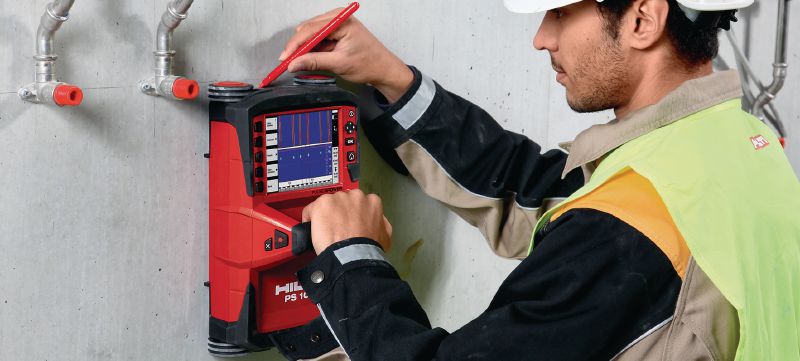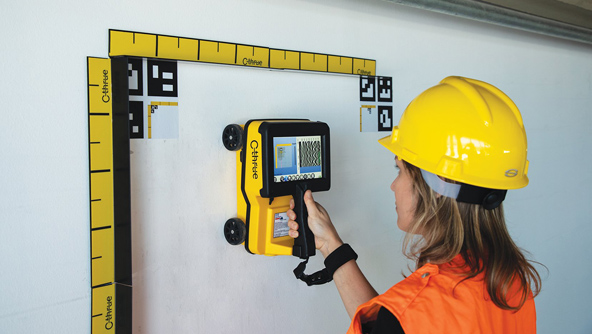Making Best Use Of Performance and Decreasing Dangers: The Duty of Concrete Scanning in Building And Construction
In the realm of building and construction, where accuracy and security are critical, the utilization of concrete scanning modern technology has become an important device for task managers and engineers alike. By harnessing innovative scanning techniques, construction teams can browse complex settings with heightened performance while minimizing possible threats that could jeopardize both timelines and budgets. The elaborate dance between making best use of effectiveness and reducing risks in building and construction depend upon the capability to peer under the surface, exposing a world of surprise obstacles and opportunities. The duty of concrete scanning in this delicate equilibrium is not simply encouraging but transformative, providing a look right into a future where costly mistakes are preempted, security is focused on, and top quality is non-negotiable.
Value of Concrete Scanning
Concrete scanning plays a critical function in guaranteeing the architectural honesty and safety and security of construction projects by properly identifying ingrained things and potential risks within concrete frameworks. By utilizing different scanning innovations such as ground-penetrating radar (GPR) and electro-magnetic induction, building groups can recognize rebar, post-tension wires, conduits, and various other covert obstacles prior to exploration, reducing, or coring right into concrete. This positive method helps protect against expensive damages, injuries, and task delays that may emerge from mistakenly striking these things during building tasks.
Additionally, the precise mapping of embedded things ensures the effective implementation of building and construction strategies, reducing the danger of mistakes and making certain the long life and sturdiness of the developed atmosphere. Inevitably, spending in concrete scanning solutions adds to the total success and safety and security of construction jobs.

Advanced Innovation in Construction
Offered the increasing need for precision and performance in construction methods, the assimilation of advanced modern technology has actually come to be instrumental in improving task outcomes and making sure optimum precaution - RainierGPR Concrete Scanning. One considerable development is Structure Details Modeling (BIM), a digital representation of a structure's physical and useful attributes. BIM permits for better partnership amongst stakeholders, boosted visualization of the project, and improved decision-making throughout the construction process. Additionally, the use of drones in construction has revolutionized site surveys, progress monitoring, and evaluations. Drones offer real-time information, improve safety by minimizing the demand for workers to gain access to risky locations, and enhance overall job monitoring. In addition, the execution of Enhanced Fact (AR) and Digital Truth (VIRTUAL REALITY) innovations in building layout and drawing board makes it possible for stakeholders to imagine the last item, identify potential issues, and make required modifications before building begins. These modern technologies streamline processes, reduce errors, and ultimately add to a lot more efficient and more secure building methods.

Advantages of Item Mapping
The utilization of things mapping modern technology in construction tasks offers a plethora of advantages that improve project planning and implementation. Among the crucial advantages of object mapping is its ability to provide accurate and in-depth information concerning the location of underground energies, architectural aspects, and various other items within the building and construction site. This information is vital for making certain that excavation and drilling tasks are performed securely and successfully, decreasing the threat of damages to existing framework.
Furthermore, things mapping modern technology makes it possible for building and construction groups to create precise 3D versions visit this page of the website, allowing for better visualization of the project and enhanced coordination amongst different professions - RainierGPR Concrete Scanning. This enhanced spatial recognition assists to recognize prospective clashes and conflicts early in the preparation stages, reducing the demand for expensive rework and delays throughout building and construction
Moreover, item mapping can additionally improve the documents process by supplying electronic records of the site in the past, during, and after building. These documents serve as important referrals for future upkeep and renovation jobs, inevitably improving the long-term effectiveness and sustainability of the constructed environment.
Protecting Against Expensive Blunders
Object mapping innovation's role in building and construction extends beyond improving task planning and execution to include an important facet: avoiding costly errors. By employing sophisticated concrete scanning strategies, construction groups can identify prospective hazards such as rebar blockage, post-tension wires, or voids within concrete structures. Finding these issues early on assists in preventing pricey mistakes throughout the building process. For instance, hitting a post-tension cable throughout drilling can lead to structural damages, hold-ups, and boosted prices for fixings. In addition, properly drawing up existing energies underground can protect against accidental damage during excavation, saving both money and time. Moreover, by making use of things mapping technology, building groups can guarantee that structure parts are mounted in the correct places, minimizing the probability of rework or retrofitting as a result of lost aspects. On the whole, the proactive use concrete scanning technologies in building projects considerably minimizes the threat of errors and ultimately adds to cost savings and task performance.
Ensuring Safety And Security and Top Quality
To support the highest possible standards of security and high quality in building and construction tasks, the implementation of concrete scanning innovation plays a crucial role. By utilizing sophisticated scanning strategies such as ground-penetrating radar (GPR) and electromagnetic induction, building groups can detect potential risks concealed within concrete frameworks prior to starting any work. This positive technique not only lessens the threat of mishaps on the building site but likewise guarantees the structural stability of the building.
Concrete scanning also aids in verifying the placement of rebar, channels, and post-tension cable televisions, ensuring that these aspects are properly positioned as per the design specifications. This precision in locating vital elements This Site assists protect against mistakes throughout the construction process, eventually causing a higher high quality completed product. Moreover, by identifying any anomalies or variances within the concrete at an early stage, necessary changes can be made without delay, reducing the likelihood of rework and pricey delays.
In essence, concrete scanning modern technology acts as a valuable device in securing both the security of construction workers and the overall top quality of the developed environment. Its capacity to find prospective risks and guarantee adherence to style requirements makes it a crucial possession in contemporary construction techniques.

Verdict
In conclusion, concrete scanning plays an important function in making best use of efficiency and minimizing risks in building projects. By using sophisticated modern technology for things mapping, possible expensive errors can be avoided, making sure safety and security and top quality of the last framework. It is essential for construction companies to prioritize making use of concrete scanning to enhance productivity, mitigate dangers, and supply top quality results in their projects.
Concrete scanning plays an important function in making sure the architectural stability click here to find out more and safety and security of building jobs by properly detecting embedded objects and possible dangers within concrete frameworks. The implementation of Augmented Truth (AR) and Virtual Fact (VR) technologies in building and construction style and planning phases enables stakeholders to picture the final item, identify prospective issues, and make needed adjustments prior to construction starts. By employing sophisticated concrete scanning techniques, building and construction teams can recognize prospective hazards such as rebar blockage, post-tension wires, or spaces within concrete structures. Overall, the aggressive use of concrete scanning modern technologies in building tasks dramatically decreases the danger of errors and inevitably contributes to set you back savings and job efficiency.
To support the highest possible requirements of safety and top quality in building jobs, the implementation of concrete scanning modern technology plays a crucial function.
Comments on “Discover Hidden Obstacles with RainierGPR Concrete Scanning Technology”